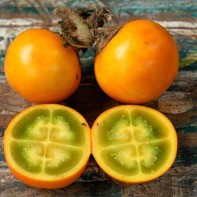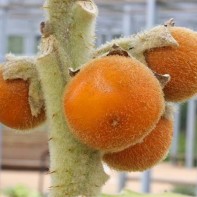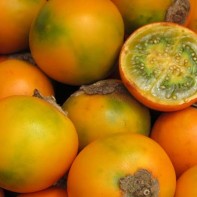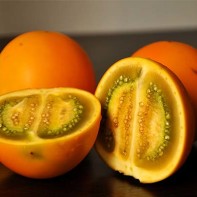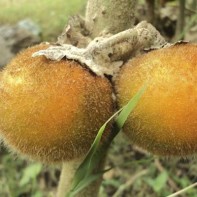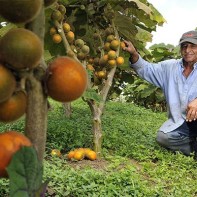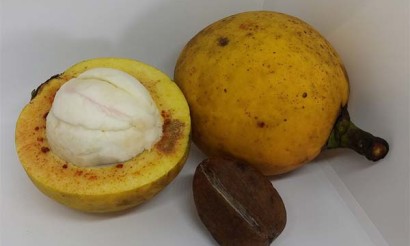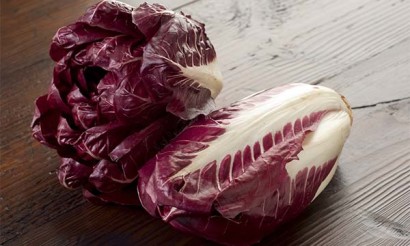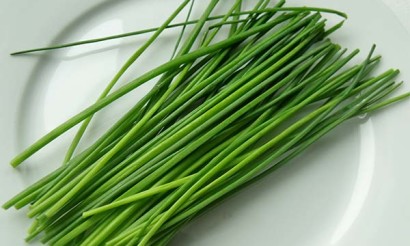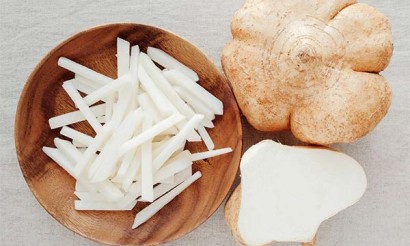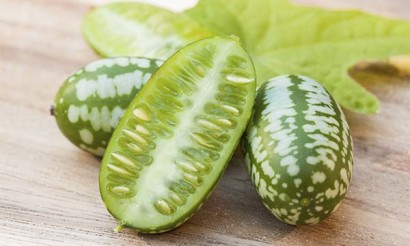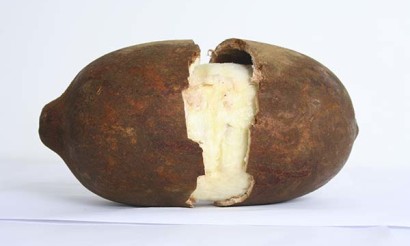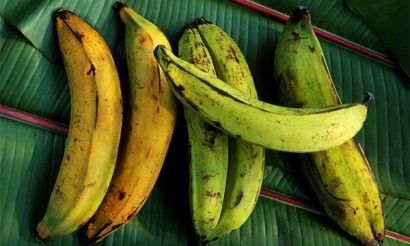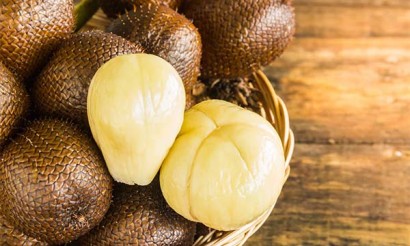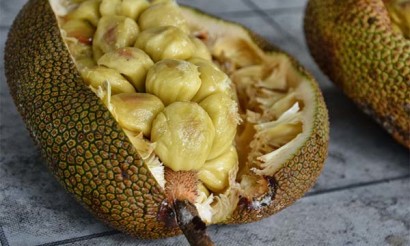Lulo: what is this fruit and why is it useful?
An exotic plant with centuries of popularity pleases residents of the South American mainland, where about 20 varieties are known. Outside the homeland of the Andes, Naranjilla is not as well known and is listed in a single species, the Queen of the Andes. It is famous for its taste and benefits to the body.
- What is this fruit.
- What it looks like
- Where it grows
- What is the usefulness of the lulo fruit
- What harm it can do
- How to eat the lulo fruit correctly
- What can be made from Lulo
- Topical Uses in Folk Medicine
- Cosmetic Applications
- How to Grow Lulo
- Seed Cultivation
- Cultivating with cuttings
- Treatment
- Interesting Facts
What is the fruit
Lulo, or naranjilla (Spanish for "naranja" - orange), is a nightshade of Whale (solanum guitoehse). It is considered a relative of potatoes and tomatoes.
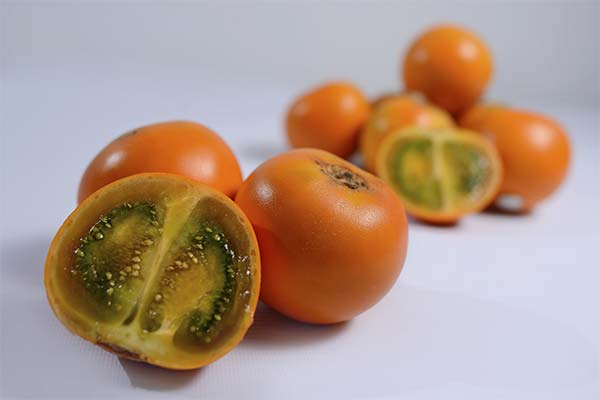
In taste, the golden apple combines several fruits (pineapple, lemon, passion fruit) and has a sour-sweet taste with a citrus flavor. Naranjilla has many names, including:
- little orange;
- golden apple;
- kia-ton-toe;
- Andean golden fruit;
- toronha.
What it looks like
The fruiting ornamental shrub reaches a height of up to 2 meters. Carved dark leaves with purple tufts (90 cm long, 30 cm wide) with thick veins. The flowers are white outside and lilac inside with yellow stamens, similar to potato flowers. About 10 fluffy flowers open in an inflorescence. The stem of Lulo is brittle, covered with villi and yellow prickles (called prickly and pubescent for this reason).
The fruit of aranchilla is round, orange in color. It grows 3-8 cm in diameter. The dense skin is covered with easily removed tufts. The small orange resembles a peach to the touch, with a structure reminiscent of a physalis. On the cut you can see 4 slices, separated by a white septum, and a green core with a transparent or yellowish jelly-like flesh with numerous white seeds. Average weight is 60 g.
Where to grow
Quitornse naranjilla is cultivated in Ecuador and southern Colombia. The subspecies differs in the absence of thorns on the stem. Septentrionale grows in central Colombia and Costa Rica (1000-2000 m above the sea). Distinguished by the stability of the branches and a large number of prickles. The Queen of the Andes is grown in Peru, Panama and the Antilles.
How is the lulo fruit useful?

The shrub of the Solanaceae contains beneficial substances:
- Vitamins - A, K, B (all group), C;
- micronutrients - manganese, potassium, iron, calcium, copper, iron, phosphorus, sodium, zinc;
- carbohydrates, proteins, pectins, fiber;
- pepsin;
- dietary fiber.
Antioxidant affects the body in many ways:
- Regular consumption prevents the development of cancer and restores overall immunity, strengthens bones.
- The positive effect on the nervous system reduces the strain on the heart.
- Components remove excess fluid from the body, regulating the balance of water and electrolytes. Vitamin complex stimulates the growth of nails and hair follicles.
What can be harmful
The product is allowed to eat in any quantity and without age restrictions. But there is a certain category of people to whom the use of this fruit is strictly contraindicated. It is worth refraining from the intake of nightshade kitonsky at:
- Low blood pressure. Slightly lower blood pressure, which may adversely affect the health of a hypotensive person.
- Individual intolerance to components (food allergy).
- Pathologies of the liver (load on the organ).
- Ulcers (aggravation of mucosal lesions).
How to eat lulo
Lulo is consumed raw or cooked. However, heat processing loses more than half of the useful substances. Peeled from the villi, the fruit is cut in half, the core is sucked out or scooped out with a spoon, along with the seeds. The skin is discarded.
What can be made from lulo
Fresh preserves all the enzymes, so most often made from naranjilla:
- natural juice;
- fruit salad;
- yogurts, jellies;
- cool drinks;
- wine.
On the basis of lulo make ice cream, marmalade, jam. As a filling, it is well disclosed in pies, and candies. The low caloric value of the product (27 kcal per 100 g) allows you to include the fruit in dietary diets. Diuretic and metabolic processes will run faster, respectively, the diet will be more effective.
Unripe fruits are less sweet and cannot be eaten raw. Unripe berries help to achieve a tangy sourness in desserts or drinks.
Traditional medicinal uses
For its medicinal properties, naranjilla is used in prevention and treatment:
- Hypertension, edema of the extremities, atherosclerosis, diabetes.
- Indigestion. Pepsin digests proteins and regulates the gastrointestinal tract, eliminates constipation, flatulence. Dietary fiber removes toxins, normalize blood glucose levels.
- Insomnia. B vitamins contained in the composition soothes the nervous system (vitamin A strengthens it), and normalizes sleep.
- Anemia (anemia). The level of iron increases the content of red blood cells and stimulates blood circulation, saturating the body with oxygen. This increases the growth of hair and nails.
- It also helps with a weakened immune system or irregular menstrual cycles.
- It protects visual organs, promotes recovery from cataracts, yellow spots, prevents the formation of allergic conjunctivitis and other eye diseases.
- Fiber eliminates harmful cholesterol and prevents blood clots. Minerals and vitamins improve the cardiovascular system, reducing the possibility of attacks and strokes.
- The high content of phosphorus, calcium and minerals increases bone hardness and prevents arthritis and osteoporosis.
Cosmetic applications
Due to the production of collagen maintains youthfulness and elasticity of the skin. Tissue cells regenerate faster, slowing the appearance of expression lines, wrinkles and aging process in general.
Naranjilla pulp and juice are added to masks, creams and oils for hair or skin. To tighten pores, smooth out wrinkles and treat acne, the face is washed, pores are opened and fresh pulp is rubbed. White blood cells penetrate deep beneath the skin and perform the body's protective function.
How to grow lulo
Andean farmers grow the golden apple in the mountains. With an unchanging climate, the perennial plants produce a steady crop. Tall trees (bananas) are planted to protect them from strong winds and attacks by insect parasites.
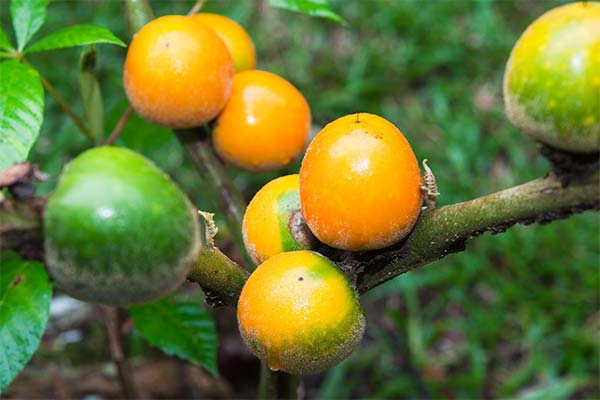
Amateur gardeners of the middle belt grow the shrub of the Solanaceae in rooms or in beds. Toronha is very fastidious for growing in the middle belt of Russia and requires special attention. It is very sensitive to cold and will die at temperatures below 10°C. Strong heat is also destructive, irrespective of the moisture level, the seedling will wither away as soon as the mark rises above 25°C. Tropical Naranthilla ceases to develop if night temperatures are elevated (average night temperature is 20°C). Kia-tone does not like direct sunlight. Short days and high humidity are ideal conditions for yields. In a temperate climate, it will not last more than 2 years. In the open area, the growth does not reach 40 cm, and in the greenhouse (subject to the heating system) will stretch up to 2 m.
Growing lulo is possible by cuttings and seeds. Take root about 50% of plants. Cutting is a reliable and fast method, but it is difficult to find a seedling in stores. Seeds for planting are ordered from an online store or brought by yourself.
It will take up to 120 days from the beginning of planting to develop Kia-ton-toe. It will take the same amount of time to mature. Therefore, planting should be done in February-monthly. A small sprout can be planted at home until it has grown stronger.
Cultivating with seeds.
For the soil, combine humus, sand, chernozem and turf in a ratio of 2:2:2:4. In a small hole, place the seed, fill it, water a little. Tightly cover the film and leave on the window sill. The optimal room temperature is 25°C. Phytolamps can help to speed up the growth process. After emergence, the room temperature will be lowered to 20°C. Artificial pollination must be carried out under room conditions. After 3 months, the stronger sprouts are moved to a voluminous pot.
Cultivation with cuttings.
The soil is similar. Drainage is poured into a container of about 2 liters to plant the cuttings. After 2-3 months, the grown seedlings are transplanted into deep pots of 12-15 liters. The windowsill should be well-lit, but shaded from direct sunlight.
Adult plants take up a lot of space (1 sq. m.), so you can continue growing in a greenhouse or greenhouse. To prevent the stem from collapsing under its own weight, it is important to make a few props.
Treatment
Every year, change the top layer of soil and fertilizer (infusion of cowpea and phosphate-potassium fertilizer). The tropical species likes humidity, but not too much. For this purpose, the soil is drained, the leaves are sprayed with water and shaken off a little.
The shoots should be watered when the top layer of soil dries up, before watering loosen the soil and saturate with fertilizer. Excess stems should be got rid of in a timely manner, distributing nutrients to the flowers. During the vegetative period, it is recommended to fertilize with nettle tincture (twice a month).
To get a good harvest, proper care is required:
- Regular transplanting.
- Feeding, loosening and saturation of the soil before the formation of flowers.
- Removal of shoots and dry branches for future harvest.
- Preventive treatment against fungal and other diseases, insect pests.
During flowering, the Queen of the Andes can be attacked by Colorado potato beetles and fruit beetles. In the winter garden or in an apartment, Naranhilla is attacked by spider mites or colonies of aphids. When the air is dry, the insect attacks. The roots and stem are affected. In this case, the bush is sprayed with apple cider vinegar (1 tbsp. water to 1 tbsp.).
If unwanted spots, swellings, wrinkles appear on the leaves, the golden apple Andes is checked for fungus and bacterial disease. If the treatment did not bring results, the plant is affected by a virus. It is burned immediately to prevent the spread of the disease.
After flowering, Naranhilla is treated with boric acid and fertilized with potassium monophosphate (2-3 times a month).
After harvesting, the old shoots are removed, this will allow the young shoots to grow faster, and the future fruits to become larger and more nutritious. A large yield of 10 kg (about 120 pieces) is obtained from one bush. It is recommended to spray the leaves regularly, so that they do not dry out.
Interesting facts
To preserve the marketable appearance, unripe fruits are used for transportation. They have a sour taste with a strong bitterness. To ripen the uvilla, put it on a window sill and leave it for a few days. It will take on an orange color, revealing the sweetness and smell of citrus. The little orange resembles a tomato by its fruitiness and brackishness.
At six months of age, the stem of the shrub begins to peel. This factor is considered normal, but during this period, it is recommended to provide the plant with light to slow down and eliminate the phenomenon.
Interesting Facts
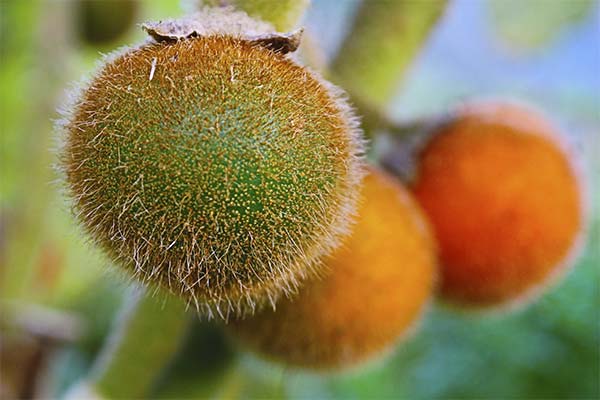
- Lulo is most often grown to decorate a garden plot. The large leaves and unusual appearance attracts attention.
- The hairs of the fruit cause irritation on the skin, so pickers work wearing gloves. To get rid of the hairs, it is scrubbed lightly on the ground.
- The national drink of Colombia and Ecuador is considered Sorbet - the natural juice of the toroncho is whipped with sugar until it foams.
- The natural juice of the golden apple is emerald in color. It exceeds lemon juice in vitamin content.
- Breeders have long been trying to please the capricious plant and start breeding the species on a large scale. Operational work is underway to cross Naranhill with the coconut shrub. The resulting hybrid is expected to be hardier and more resilient when transported and planted in colder areas.
- The caloric value of each fruit depends on how it is grown, but it is still a dietary product with a rich vitamin and mineral content.
- In Costa Rica, the exotic product is eaten with salt, added to meat and vegetable dishes, the pulp is covered with cheese pies. Naranjilla-based wine is very popular.
«Important: All information on this site is provided for informational purposes only. for informational purposes only. Consult with a specialist before applying any recommendations. specialist. Neither the editors nor the authors are liable for any possible harm caused by materials."

